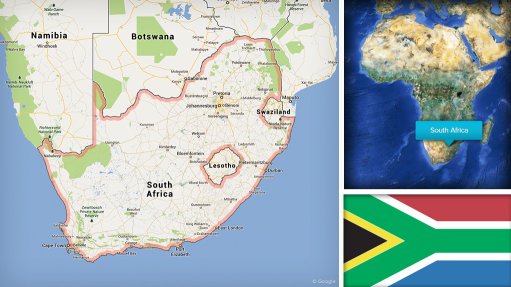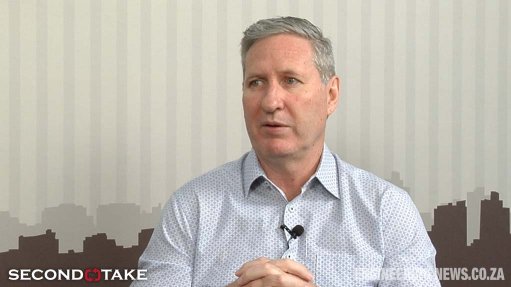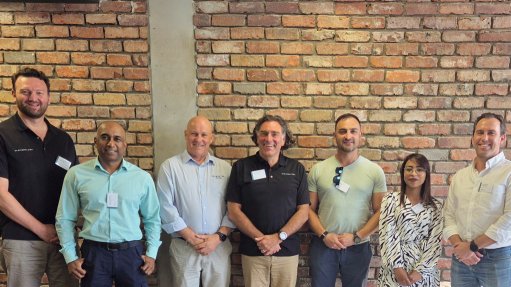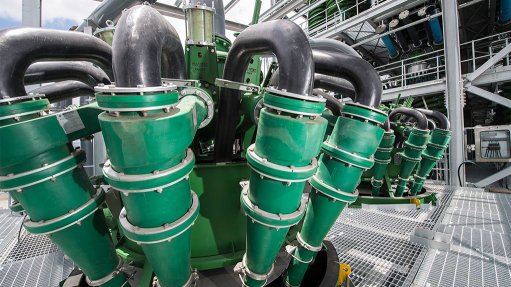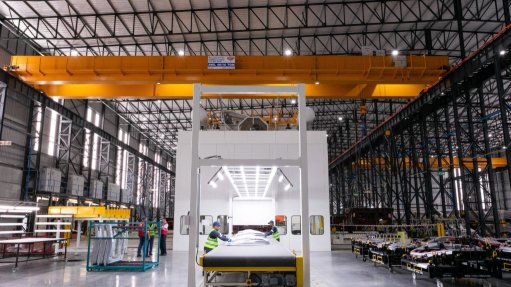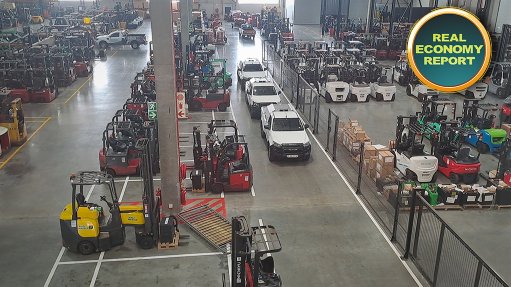Holistic view, specific green transition strategies can deliver growth for African industries
Rather than adopting green innovations just for the sake of it, Africa must focus on the sustainable growth that can be achieved through the local use of green technologies and innovations across industrial value chains.
Similarly, rather than being passive recipients of technology transfers, Africa should rather investigate how it could localise green innovations to make them relevant and practical for the African, regional and country-specific context, said strategy and policy nonprofit think tank Tony Blair Institute for Global Change climate and energy senior policy adviser Olamide Oguntoye.
“We should put in place a vision of what we want to see the technology achieve in our own context. For example, if we want to reduce pollution, we should set initial targets of what levels of pollution reduction we want to see in our local manufacturing environment.
“With a set vision, companies and industries can then determine what technologies can help them to achieve the objective and what partners they need to engage to achieve this,” he said during a webinar hosted by economic policy think tank African Centre for Economic Transformation (ACET) on July 8.
Fostering technology innovations for African green industries was imperative because it contributed to improving environmental sustainability and served as a pathway to economic transformation and for growth into high-end manufacturing that was sustainable, said ACET senior fellow Blaise Bayuo during the 'Green Technology Innovation for Industrial Growth in Africa: Policy, Finance, and Startup Ecosystem' webinar.
In building a green innovation ecosystem, Africa should look at natural and competitive advantages and deploy mature technologies for domestic needs and invest in high-potential green sectors. Countries should then build opportunity matrices and use policies to align resources with suitable technologies and in line with competitive advantages, he advised.
In stimulating the local market, there should be a balance between export and domestic uptake to ensure the market is competitive but also that the local market is stimulated for green products.
Further, the ACET team identified some key strategies for stimulating industrial demand for green innovations. This demand is necessary to build a market and incentives system, and countries can use public procurement to support manufacturing firms, which will then see the need to adopt green innovations.
Similarly, the African Continental Free Trade Area could provide some incentives, in which large firms supported the transition and served as anchors for consumption of, and demand for, green innovations. This would also broaden the market for investors, he said.
“While there remains a question about whether Africa would be willing to pay a premium for green technology products domestically, these are some of the challenges that can drive policy interventions; with some companies that can focus on exports and others on the domestic market,” said Bayuo.
Africa needed industrialisation and structural transformation. Patterns from the past indicated to economists that growth and structural transformation were the most effective way to lift people out of poverty, said government policy research think tank Growth Teams MD Chema Triki.
“While green growth can be viewed from a technology or green industry perspective, the focus should not be on going green first and forgetting about growth.
“Rather, structural transformation should be the main process Africa should engage in and use to evaluate what opportunities the green transition can offer and how countries and industries can make the most of it,” she said.
Africa should adopt a sectoral approach to green technology and innovation. A holistic approach to industrialisation was founded on an understanding of priority sectors that could present the highest growth opportunity for a country, she said.
Countries should then determine how these priority sectors can engage in adopting green innovation from the perspective of global value chains, and where they can enter into technology value chains and learn by doing.
“This [learning by doing] is an important aspect to make the most from green technologies,” said Triki.
The need for a green transition presented significant opportunities for energy in Africa, and green energy was an obvious opportunity, considering the continent's natural solar endowments, she added.
Additionally, the demand for energy in African households and industrial sectors was projected to increase and would generate more demand for energy resources, said Bayuo.
“The continent cannot afford to proceed with non-green energy, as it will continue to emit greenhouse gases and pollution, and because the growth arising from the transition process must be sustainable,” he said.
Industrialisation is pivotal for Africa to move from raw commodity export to value-added production. This can be supported by harnessing resources for green innovation, such as cobalt from the Democratic Republic of Congo for battery energy storage and Africa increasing its installed solar power capacity from 1% of available solar resources.
However, the ability to leverage technology locally and enter into green technology development and innovation required some portion of local ownership and vision to develop and deploy suitable innovations, said Oguntoye.
“Some technologies need to be locally owned and driven; they need to be in the hands of private entrepreneurs, startup companies and tech founders. These actors need to own the technology to take it to market and deploy it at scale.
“This ecosystem must be empowered with a community of talent across the board; not only in private enterprises, but also present in government agencies. Once you have suitable talents in public organisations, they can cut through red tape for related projects more quickly,” he said.
He emphasised that countries needed to forge partnerships with foreign organisations and experts, as not all technology could be home-grown. For example, the next-generation of battery technologies could not readily be done locally, given the investments in frontier research laboratories in other parts of the world.
However, it was about working hand-in-hand with partners, ensuring the local industry was empowered with talent to make decisions about technology, and driving demand by setting targets for the vision the country or sector wanted to achieve, he recommended.
“It is about localising technologies. International partners bring global depth to the partnership, and countries should view foreign partnerships as catalysts rather than an end goal in itself,” Oguntoye said.
To prevent Africa from becoming a dumping ground for technologies in which local actors feel they do not own the technology or cannot sustain it over the long run, the local ecosystem should set out a vision, bring in foreign partners as catalysts and ensure the local ecosystem is empowered and feels that it owns the technology.
Meanwhile, think tank European Centre for Development Policy Management climate action and green transition team head Alfonso Medinilla said the centre's evaluation indicated that some existing industries, which may not be green yet, could be leveraged to support green innovation and industrialisation in Africa.
For example, the automotive industry capacity could be leveraged to support green production.
However, as with all other strategic considerations, the different technology categories and pathways for industry to adopt them all require different approaches to financing.
“It is important to look at a broad spectrum of industrial segments to identify the different pathways a country can take to move into green industrial value chains.
“This approach must also not be underestimated. It is difficult to take this approach; for example, there are often expectations of creating industries linked to export markets for green goods or electricity.
“Despite this, there are clear opportunities to industrialise green technologies on the back of some industries, although it may be critical for countries to bring down electricity prices and provide backbone infrastructure and foreign currency availability to achieve this,” he said.
Article Enquiry
Email Article
Save Article
Feedback
To advertise email advertising@creamermedia.co.za or click here
Comments
Press Office
Announcements
What's On
Subscribe to improve your user experience...
Option 1 (equivalent of R125 a month):
Receive a weekly copy of Creamer Media's Engineering News & Mining Weekly magazine
(print copy for those in South Africa and e-magazine for those outside of South Africa)
Receive daily email newsletters
Access to full search results
Access archive of magazine back copies
Access to Projects in Progress
Access to ONE Research Report of your choice in PDF format
Option 2 (equivalent of R375 a month):
All benefits from Option 1
PLUS
Access to Creamer Media's Research Channel Africa for ALL Research Reports, in PDF format, on various industrial and mining sectors
including Electricity; Water; Energy Transition; Hydrogen; Roads, Rail and Ports; Coal; Gold; Platinum; Battery Metals; etc.
Already a subscriber?
Forgotten your password?
Receive weekly copy of Creamer Media's Engineering News & Mining Weekly magazine (print copy for those in South Africa and e-magazine for those outside of South Africa)
➕
Recieve daily email newsletters
➕
Access to full search results
➕
Access archive of magazine back copies
➕
Access to Projects in Progress
➕
Access to ONE Research Report of your choice in PDF format
RESEARCH CHANNEL AFRICA
R4500 (equivalent of R375 a month)
SUBSCRIBEAll benefits from Option 1
➕
Access to Creamer Media's Research Channel Africa for ALL Research Reports on various industrial and mining sectors, in PDF format, including on:
Electricity
➕
Water
➕
Energy Transition
➕
Hydrogen
➕
Roads, Rail and Ports
➕
Coal
➕
Gold
➕
Platinum
➕
Battery Metals
➕
etc.
Receive all benefits from Option 1 or Option 2 delivered to numerous people at your company
➕
Multiple User names and Passwords for simultaneous log-ins
➕
Intranet integration access to all in your organisation






